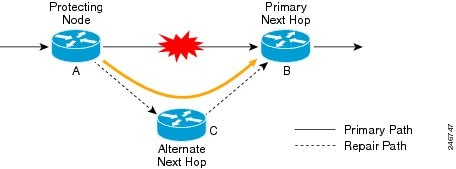Prerequisites for OSPFv2 Loop-Free Alternate IP Fast Reroute
Open Shortest Path First (OSPF) supports IP FRR only on platforms that support this feature in the forwarding plane. See the Cisco Feature Navigator, http://www.cisco.com/go/cfn , for information on platform support. An account on Cisco.com is not required.


 Feedback
Feedback